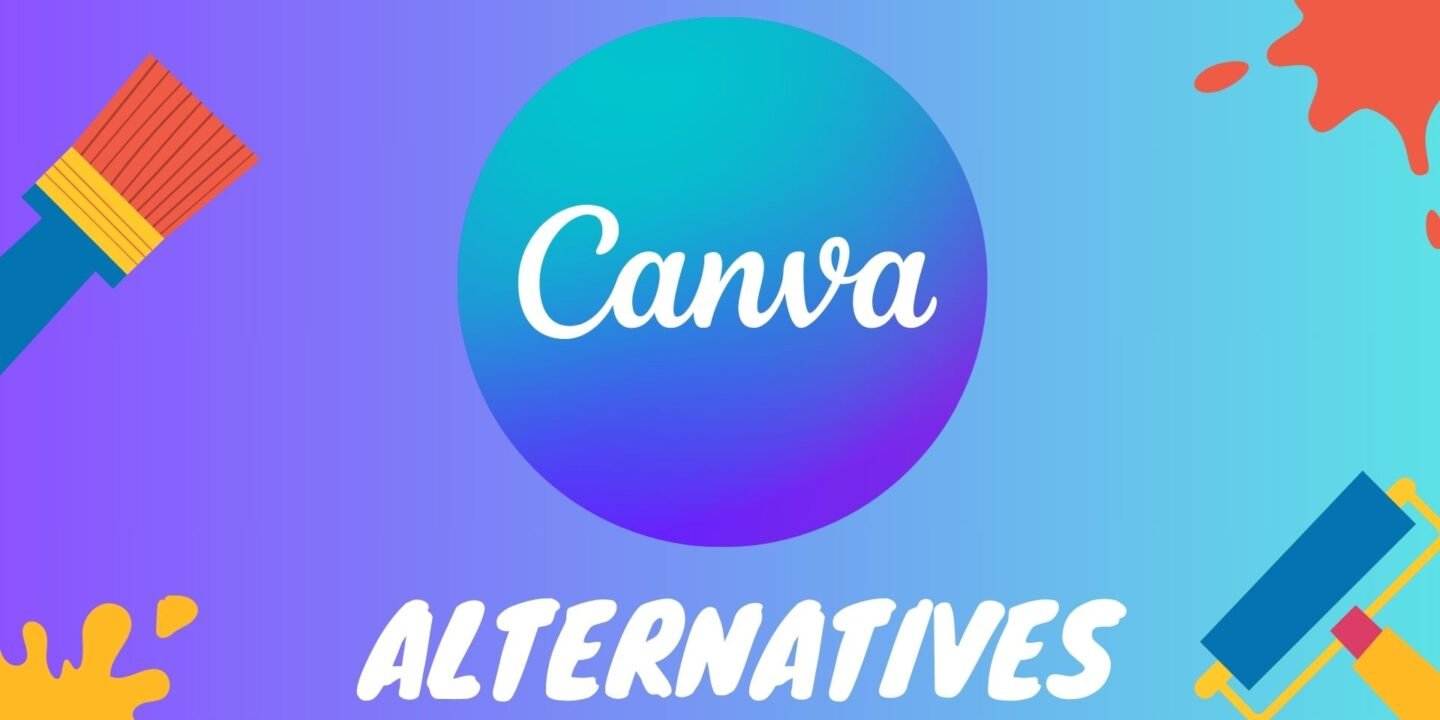
In 2025, the world of design tools will be more diverse than ever, offering designers a wide range of options to bring their creative ideas to life. While Canva has been popular for a long time, used by both beginners and professional designers, many are now trying other tools that offer more customization, advanced features, or specific tools for certain industries. If you want to add more tools to your creative kit or find a platform that fits your needs better, there are many Canva alternatives available.
In this blog, we’ll take a closer look at Canva, including its features, downsides, and reasons why you might want to switch to another tool in 2025. Then, we’ll go over the top 8 Canva alternatives for designers and what makes each one unique.
Introduction To Canva
Canva is an online design platform that allows users to create a wide variety of visual content, ranging from social media graphics to presentations, infographics, posters, and even videos. It was launched in 2013 with the goal of making design accessible to everyone, regardless of their experience level. Canva’s simplicity and extensive library of templates have made it a go-to tool for millions of users, including marketers, educators, small business owners, and professional designers.
One of Canva’s key selling points is its ease of use. Canva offers an intuitive drag-and-drop interface that allows even novice designers to create professional-looking designs in minutes. The platform is cloud-based, which means you can access your designs from any device with an internet connection, making it a popular choice for remote teams and freelancers.
Canva Features
Canva’s extensive features have been a huge part of its success. Let’s take a closer look at some of the key features that make Canva so popular:
- User-Friendly Interface: Canva’s drag-and-drop interface is incredibly easy to use, even for beginners. Whether you’re creating a simple social media graphic or a more complex presentation, the platform is designed to make the process as seamless as possible.
- Template Library: One of Canva’s most attractive features is its vast library of templates. From Instagram posts and stories to business cards, presentations, and flyers, Canva offers thousands of customizable templates across various design categories.
- Custom Dimensions: While templates are great, Canva also allows users to create designs with custom dimensions. This is especially useful for designers working on projects with specific size requirements, such as website banners or print materials.
- Graphic Elements And Images: Canva provides a wide selection of free and premium graphic elements, including shapes, icons, illustrations, and stock photos. Users can easily incorporate these elements into their designs, making it a one-stop shop for visual content creation.
- Branding Tools: Canva’s branding tools allow businesses to create consistent designs across all marketing channels. Users can upload their brand’s fonts, colours, and logos to ensure that every design they create adheres to their brand guidelines.
- Collaboration: Canva makes collaboration easy. Teams can work on the same design in real time, leave comments, and make edits on the go. This feature is particularly valuable for remote teams or those working on projects with multiple stakeholders.
- Animation And Video Editing: Canva has added features for creating animated graphics and basic video editing, expanding its use cases beyond static images. Users can add animated text, transitions, and music to create engaging video content without the need for specialised video editing software.
- Mobile App: The Canva mobile app brings all the platform’s features to your phone or tablet, making it easy to design on the go. Whether you need to tweak a social media post or create an entirely new design, you can do it from anywhere.
Canva Drawbacks
While Canva is undoubtedly a powerful tool, it’s not without its limitations. Here are some of the key drawbacks that lead designers to seek alternatives:
- Limited Design Flexibility: Canva’s template-based approach can sometimes feel restrictive. While it’s great for quick designs, experienced designers often find it limiting in terms of creative freedom. You’re confined to Canva’s drag-and-drop functionality, which can make it difficult to create completely unique designs.
- Basic Editing Capabilities: For professional designers who require advanced editing tools, Canva’s photo and graphic editing capabilities may feel underwhelming. It lacks the precision and detailed control offered by more professional tools like Adobe Photoshop or Figma.
- Paid Features: While Canva does offer a free version, many of its more advanced features, such as premium templates, stock photos, and animations, are locked behind a paywall. For designers who need access to a broader range of resources, this can be frustrating.
- Over-Reliance On Templates: While Canva’s templates are a great starting point, they can also lead to designs that look generic. Many Canva users rely heavily on templates, which can result in designs that lack originality or feel repetitive.
- No Advanced Vector Editing: For designers working with vector graphics, Canva falls short. It doesn’t offer the same level of control and precision as tools like Adobe Illustrator, making it a less-than-ideal choice for those who need to work with scalable vector graphics.
Why Consider Canva Alternatives?
If Canva is such a popular tool, why are designers looking for alternatives in 2025? There are a few key reasons why you might want to explore other options:
- More Control And Customization: While Canva’s simplicity is great for beginners, experienced designers often need more control over their designs. Alternatives like Figma or Adobe Express offer more advanced customization options that can cater to complex design needs.
- Specialised Features: Certain design tasks, like UI/UX design, prototyping, or video editing, require specialised tools. Canva alternatives like Figma or Visme offer specific features designed to meet these needs, making them better suited for professional designers.
- Team Collaboration: If you work as part of a design team, you might find that Canva’s collaboration features are a bit limited. Tools like Figma and Easil excel in team collaboration, allowing multiple users to work on the same project in real time, with more advanced team management features.
- Brand Consistency: Maintaining consistent branding across all design projects can be a challenge with Canva, especially for larger teams. Alternatives like Easil offer robust branding tools that make it easier to enforce brand guidelines and ensure consistency across designs.
- Advanced Photo Editing: If your design work involves a lot of photo editing, Canva might not be powerful enough to meet your needs. Tools like PicMonkey offer more advanced photo-editing capabilities, making them a better option for designers who need more control over their images.
Top 8 Canva Alternatives
Now that we’ve explored why Canva might not be the perfect fit for every designer, let’s dive into the top 8 Canva alternatives and see what each one has to offer.
Figma
Why Figma?
Figma has emerged as one of the most powerful design tools on the market, especially in the world of UI/UX design. Its real-time collaboration capabilities, combined with a robust feature set, make it an excellent alternative to Canva for designers who need more control over their projects. Unlike Canva, Figma is built for both individual designers and teams, allowing for seamless collaboration, prototyping, and more.
Figma operates entirely in the browser, which means there’s no need for downloads or installations. This makes it an ideal tool for remote teams or freelancers who need to collaborate with clients without worrying about software compatibility.
Key Features:
- Real-time collaboration: One of Figma’s standout features is its real-time collaboration. Multiple team members can work on the same project simultaneously, making it easy to share feedback, make edits, and iterate on designs in real-time.
- Prototyping capabilities: Figma allows designers to create interactive prototypes directly within the platform. This is a huge plus for UI/UX designers, as it eliminates the need for third-party prototyping tools.
- Plugins and integrations: Figma has a robust ecosystem of plugins and integrations that extend its functionality. Whether you need additional design elements, advanced analytics, or third-party app integrations, Figma’s plugin library has you covered.
- Design systems: Figma allows teams to create and manage design systems, ensuring that branding and design elements are consistent across all projects. This is particularly useful for large teams or agencies working with multiple clients.
Who’s it for?
Figma is best suited for designers working on digital products, such as websites or mobile apps. Its powerful collaboration tools make it ideal for teams, especially those working remotely. If you’re a UI/UX designer, Figma’s prototyping and design system capabilities will be a game-changer for your workflow.
VistaCreate (formerly Crello)
Why VistaCreate?
If you’ve been a fan of Canva’s ease of use but are looking for something with a bit more flair in the animation department, VistaCreate (previously known as Crello) might be your perfect match. It offers a similar user experience but with a particular focus on animated designs, making it a standout option for social media managers and content creators who need engaging visuals.
VistaCreate offers a drag-and-drop editor, just like Canva, but with additional features geared towards creating dynamic and animated graphics. Its library of templates and design elements is extensive, making it easy to find inspiration or get started on a project quickly.
Key Features:
- Animation tools: VistaCreate’s animation features allow you to create dynamic social media posts, banners, and ads. With a few clicks, you can add movement to your designs, making them stand out in crowded social media feeds.
- Huge template library: VistaCreate boasts thousands of templates, similar to Canva. These templates are categorised by type, making it easy to find exactly what you need for your project.
- Stock photos and elements: Like Canva, VistaCreate offers access to millions of stock photos, illustrations, and design elements, many of which are free.
- Team collaboration: Although VistaCreate doesn’t have the same level of collaboration features as Figma, it does allow users to invite team members to collaborate on projects, making it a good choice for small teams or agencies.
Who’s it for?
VistaCreate is an excellent choice for designers who need to create animated or video content quickly. It’s perfect for social media managers, marketers, or content creators who want to add dynamic visuals to their posts. If you enjoy Canva but need more animation capabilities, VistaCreate is worth considering.
Adobe Express
Why Adobe Express?
Adobe Express, previously known as Adobe Spark, is Adobe’s answer to simple and accessible graphic design tools. It’s perfect for designers who want a Canva-like experience but with the added benefit of Adobe’s robust ecosystem. Adobe Express is cloud-based and designed to cater to those who need to create professional-quality visuals without the steep learning curve of Adobe’s more advanced tools like Photoshop or Illustrator.
Adobe Express is especially useful for creating social media graphics, short videos, and presentations. It integrates seamlessly with Adobe’s Creative Cloud, allowing you to access Adobe Fonts, Stock, and other assets directly from the platform.
Key Features:
- Adobe Fonts and Stock integration: With Adobe Express, you can access Adobe’s incredible library of fonts and stock photos directly from the platform, making it easy to find the perfect assets for your design.
- Cross-device functionality: Adobe Express works across all your devices, allowing you to start a project on your desktop and finish it on your phone or tablet.
- Responsive templates: Adobe Express offers responsive templates that automatically adjust to fit different screen sizes, making it easy to create designs that look great on any device.
- Video creation: In addition to graphic design, Adobe Express includes tools for creating short, engaging videos. You can add transitions, animations, and text overlays to create professional-looking video content.
Who’s it for?
Adobe Express is ideal for designers who are already familiar with the Adobe ecosystem and want a simpler, more streamlined design tool. It’s great for social media managers, marketers, and small business owners who need to create high-quality visuals quickly. If you need access to Adobe’s vast library of assets but don’t want to dive into more complex software like Photoshop, Adobe Express is a solid choice.
Easil
Why Easil?
Easil is a design tool that combines the simplicity of Canva with powerful branding features. It’s particularly popular among businesses and teams who need to create professional-quality designs while maintaining brand consistency. Easil’s brand kit features allow users to store and access brand colours, fonts, and logos, ensuring that every design aligns with brand guidelines.
Easil also offers a drag-and-drop interface similar to Canva, making it easy for beginners to get started. However, it sets itself apart with its focus on brand management and collaboration, making it an excellent choice for teams working on multiple design projects.
Key Features:
- Brand kits: Easil’s brand kits allow businesses to store their brand assets, including fonts, colours, and logos, in one place. This ensures that every design stays on-brand, which is crucial for businesses with strict branding guidelines.
- Templates for both print and digital designs: Easil offers a wide range of templates for both digital and print designs, making it easy to create everything from social media posts to business cards and brochures.
- Team collaboration: Easil’s collaboration features make it easy for teams to work on projects together, with tools for sharing feedback, leaving comments, and making edits in real-time.
- Design approval workflows: For larger teams, Easil offers design approval workflows, allowing managers to approve designs before they are published or sent to print. This ensures that all designs meet quality and brand standards.
Who’s it for?
Easil is perfect for businesses, agencies, and teams who need to maintain brand consistency across multiple design projects. It’s also a great choice for marketers who need to create both digital and print designs. If brand management is a top priority for your team, Easil is a fantastic alternative to Canva.
PicMonkey
Why PicMonkey?
PicMonkey has evolved from being a simple photo-editing tool into a full-fledged design platform. It’s a great choice for designers who work heavily with images and need more advanced photo-editing features than Canva offers. While Canva is great for quick, template-based designs, PicMonkey allows for more detailed editing, making it a fantastic tool for photographers and social media managers who need to create visually stunning content.
PicMonkey’s interface is intuitive and easy to use, but it offers more control over elements like layers, filters, and retouching, making it a versatile tool for designers who need to work with images on a deeper level.
Key Features:
- Advanced photo editing: PicMonkey offers a wide range of photo-editing tools, including retouching, layer management, and advanced filters. This makes it a great option for designers who need to create polished, high-quality images.
- Cloud storage: PicMonkey offers cloud storage, allowing users to save and organise their designs in one place. This makes it easy to access your designs from any device and collaborate with team members.
- Customizable templates: While PicMonkey’s templates aren’t as extensive as Canva’s, they are highly customizable, allowing you to create unique designs from scratch or start with a template and make it your own.
- Collaboration features: PicMonkey allows users to share designs with team members, making it easy to collaborate and get feedback on projects.
Who’s it for?
PicMonkey is perfect for designers who need more control over their photo-editing process. It’s especially useful for social media managers, photographers, and marketers who need to create visually stunning content. If you find Canva’s editing capabilities too basic, PicMonkey’s advanced tools are a great alternative.
Snappa
Why Snappa?
Snappa is a design tool built for speed. If you’re looking for a platform that allows you to create professional-looking designs quickly, Snappa should be on your radar. It’s incredibly easy to use, making it a great alternative to Canva for beginners or those who need to create social media graphics, ads, or banners on tight deadlines.
Snappa’s pre-sized templates take the guesswork out of design, allowing users to create perfectly sized graphics for every social media platform. It also offers access to a library of free stock photos, making it easy to find high-quality images for your projects.
Key Features:
- Pre-sized templates: Snappa offers templates for every major social media platform, eliminating the need to manually resize your designs.
- Stock image library: Snappa includes a library of free, high-quality stock photos, saving you time searching for the right image for your project.
- Team collaboration: Snappa allows users to share designs with team members, making it easy to collaborate and receive feedback on projects.
- No learning curve: Snappa’s interface is incredibly user-friendly, making it a great choice for beginners who need to create professional-looking designs without a steep learning curve.
Who’s it for?
Snappa is ideal for social media managers, small business owners, and marketers who need to create professional-quality graphics quickly. Its simplicity makes it perfect for beginners, while its speed and ease of use make it a great option for anyone who needs to create designs on tight deadlines.
Visme
Why Visme?
Visme is a versatile design tool that excels in creating infographics, presentations, and reports. If your design work involves a lot of data visualisation or educational content, Visme is a fantastic Canva alternative. It offers a range of tools for creating interactive and visually engaging content, making it a great option for educators, marketers, and business professionals.
Visme also offers a wide selection of templates and design elements, making it easy to create polished, professional presentations and reports. Its focus on interactivity sets it apart from Canva, allowing users to create designs that go beyond static images.
Key Features:
- Infographics and presentations: Visme is known for its infographic and presentation capabilities. It offers a wide range of templates and design tools for creating data-driven content.
- Interactive elements: Visme allows users to add interactive elements, such as clickable buttons, animations, and transitions, to their designs. This makes it a great option for creating engaging content like online courses or interactive reports.
- Branding tools: Visme’s branding tools allow businesses to store and manage their brand assets, ensuring that all designs stay on-brand.
- Analytics: Visme offers built-in analytics tools, allowing users to track the performance of their designs and optimise them for better engagement.
Who’s it for?
Visme is ideal for educators, marketers, and business professionals who need to create visually engaging presentations, reports, and infographics. If you need a tool that goes beyond static images and allows for interactivity and data visualisation, Visme is a great alternative to Canva.
Stencil
Why Stencil?
Stencil is a simple yet powerful design tool tailored for marketers, bloggers, and social media managers who need to create eye-catching graphics quickly. Stencil is known for its speed and simplicity, much like Snappa, but it comes with a larger library of ready-to-use assets, including stock images and fonts.
One of Stencils most notable features is its direct integration with social media platforms, allowing users to create and post designs without leaving the tool. It also offers browser extensions that make it easy to create visuals while browsing the web.
Key Features:
- Speed and ease of use: Stencil is designed for quick design projects, making it ideal for time-sensitive marketing efforts.
- Stock images and icons: Access over 5 million stock photos and thousands of icons, all royalty-free.
- Social media integration: Create, post, and schedule graphics directly from Stencil to your social media platforms.
- Browser extensions: Stencils browser extensions make it easy to create designs from any webpage without switching apps.
Who’s it for?
Stencil is ideal for bloggers, marketers, and social media managers who need a fast and simple tool for creating marketing visuals. Its social media integration makes it perfect for users who want to streamline their content creation process without sacrificing quality.
Summary
Here is a table summarising the key features, best uses, and reasons to consider each of the 8 Canva alternatives we’ve discussed:
| Tool | Best For | Key Features | Why Consider It |
|---|---|---|---|
| Figma | UI/UX design and team collaboration | Real-time collaboration, prototyping | Ideal for teams and UI/UX projects |
| VistaCreate | Animated content and social media | Animation, stock assets, templates | Great for animated and social content |
| Adobe Express | Adobe users needing simplicity | Adobe integration, cross-device, video | Simple tool with Adobe asset access |
| Easil | Branding and team design projects | Brand kits, collaboration, approvals | Perfect for consistent branding |
| PicMonkey | Advanced photo editing | Photo editing, cloud storage | More control for photo editing |
| Snappa | Quick social media graphics | Pre-sized templates, stock images | Fast, easy for social media graphics |
| Visme | Infographics and presentations | Infographics, data visualization | Best for data-driven visuals |
| Stencil | Fast marketing visuals | Quick design, social media integration | Quick, simple marketing visuals |
Conclusion
While Canva remains a powerful and popular design tool, it’s clear that there are many compelling alternatives that offer more advanced features, better customization, and specialised tools. Whether you’re a professional designer looking for more control over your work or a beginner who needs a tool tailored to specific design tasks, there’s a Canva alternative that fits your needs.
From robust collaboration features to animation capabilities, the top 8 Canva alternatives we’ve explored offer something for everyone. Take the time to explore each of these tools and find the one that best suits your design workflow. Whether you’re creating social media graphics, presentations, or complex UI/UX designs, the right tool can make all the difference in your creative process.
So, are you ready to explore new creative possibilities? Your next design breakthrough might just be a tool switch away!




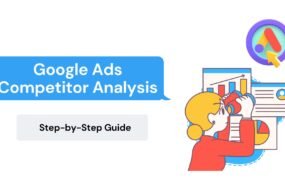
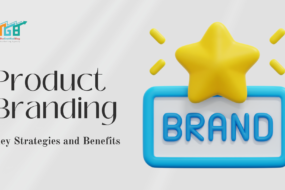
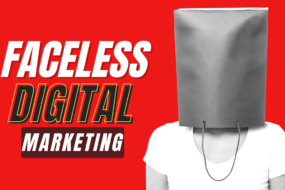
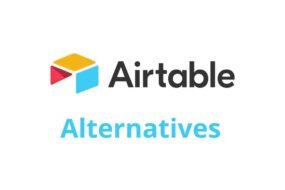
No Comments